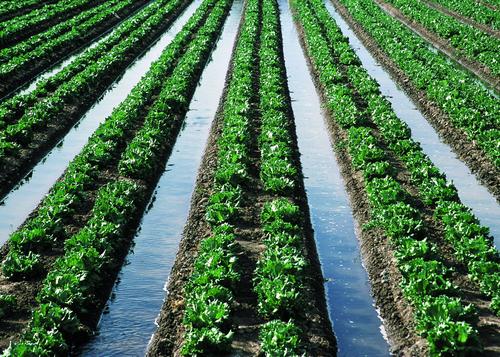An alternative to flooding the entire field surface is the construction of small channels along the primary direction of water movement. Water introduced in these "furrows", "creases" or "corrugations" infiltrates through the wetted perimeter and moves vertically and laterally thereafter to refill the soil. Furrows can be used in conjunction with basins and borders to overcome topographical variation and crusting. (Walker 2003) Furrows are well adapted to row crops, orchards or vineyards. (Burt 2000)
Furrows provide better on-farm water management capabilities under most surface irrigation conditions. Flow rates per unit width can be reduced substantially and topographical conditions can be more severe and variable. A smaller wetted area can reduce evaporative losses on widely spaced crops. Furrows provide operational flexibility important for achieving high efficiencies for each irrigation throughout a season. It is a simple (although labor intensive) matter to adjust the furrow stream size to changing intake characteristics by simply changing the number of simultaneously supplied furrows. (Walker 2003)


